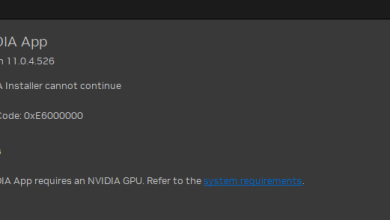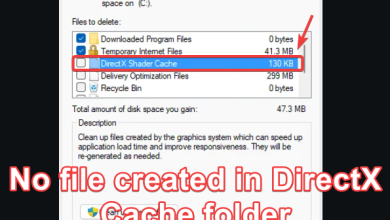5 Solutions If Windows Won’t Detect NVIDIA Graphics Card
When the Windows system is unable to detect NVIDIA GPU, an error message displays stating ‘Nvidia graphic card was not detected in your system’. This prevents the driver from appearing in the Device Manager unless you access the ‘Show hidden devices’ option. The properties of the driver state that ‘Currently, this hardware device is not connected to the computer’.

Your Windows system will not be able to detect the NVIDIA graphics card if the graphics driver is corrupt or installed incorrectly because Graphic cards rely on these drivers to efficiently provide it’s functionalities. Without the driver, you will not be able to utilize your graphics card’s full potential.
In this guide, we will walk you through the troubleshooting methods to try if this happens on your computer. Proceed with the method that fits your situation the best.
Before You Begin
You will need to know hardware ID of your device to proceed with some of the steps listed below. In case you are not sure which GPU your computer has, here is a quick guide for you to find it:
- Type Device Manager in the search area of the taskbar and click Open.
- Locate your device in the Device Manager and right-click on it.
- Choose Properties from the context menu.

Access the properties of device - In the Properties dialog, head over to the Details tab and expand the dropdown for Property and choose Hardware IDs.
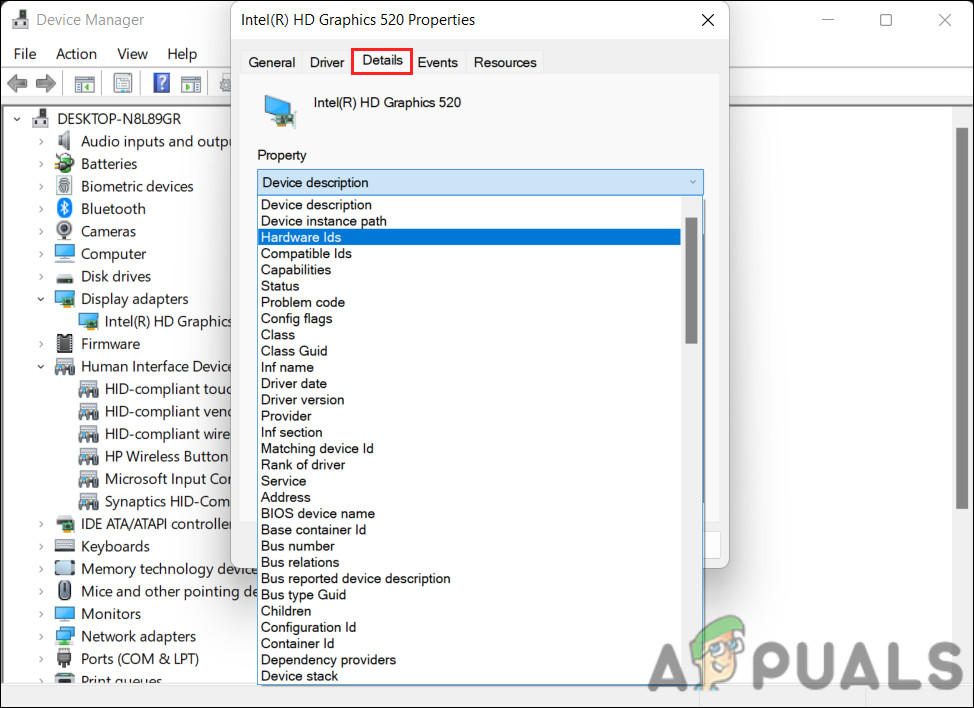
Look for the hardware ID
Once you have found the hardware ID, look for its compatible driver on the web.
1. Check the Device Manager
The first thing that we recommend doing is checking if the graphics card is listed in the Device Manager. You might notice a yellow exclamation mark on it, which will indicate that the driver is either outdated or corrupt.
Here is how you can check the Device Manager:
- Type Device Manager in the search area of the taskbar and click Open.
- Expand the Display Adapters section and check if your driver is listed there.
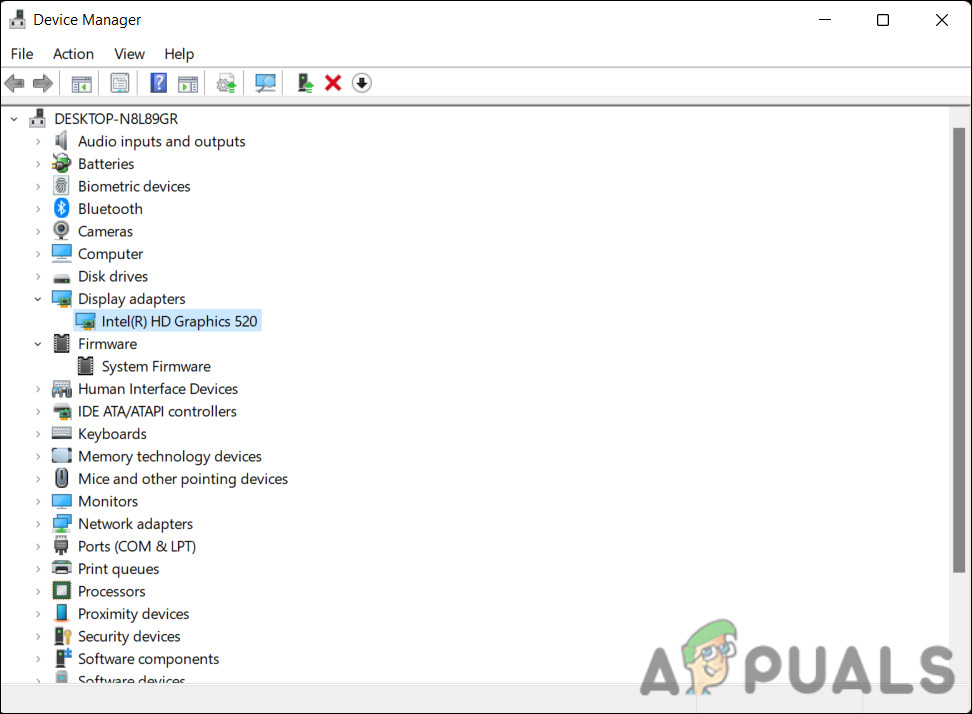
Locate the display driver
If it is and has any symbols associated with it, proceed with the next method below.
2. Reinstall the Driver
As we mentioned earlier, it is possible that the system cannot detect the graphics card because the driver is corrupt or outdated.
A corrupted driver may have occurred during an update, installation, or as a result of malware, resulting in Windows not being able to detect it. An outdated graphics driver can also cause similar issues. Whenever a new version of Windows is released, the graphics driver may need to be updated to be compatible.
The best way to proceed in this case is by uninstalling the current driver and then downloading and installing the latest version from the manufacturer’s website.
It is important to first uninstall your current driver before installing the new one to prevent any conflicts between the old and the new driver.
Here is all that you need to do:
- Download the Display Driver Uninstaller and click on the downloaded file to install the tool.
- Once the tool is installed, run it.
- Expand the dropdown for Select Graphics Driver and choose NVIDIA.
- Now, click on Clean and restart (Highly Recommended). This should restart your computer.
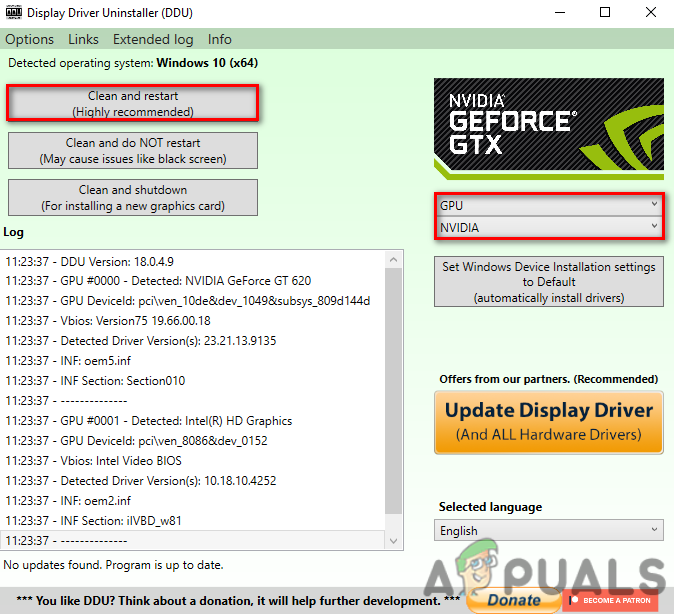
Selecting Graphics Card driver for the Uninstallation Process - Once the installation process is completed, head over to the NVidia drivers download page.
- In the Manual driver search section, enter all the required information correctly.
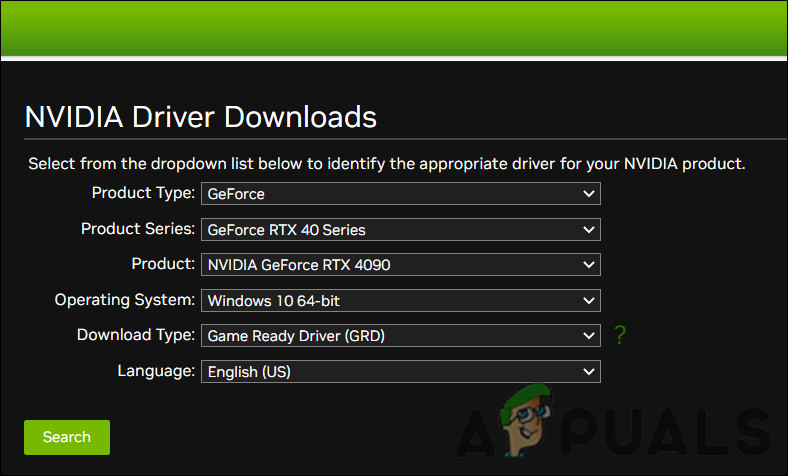
Enter the required information - Click on the Search button to find the appropriate driver for your system.
- Choose the first driver that appears in the list and download it. It is the most recent driver available for your GPU and operating system.
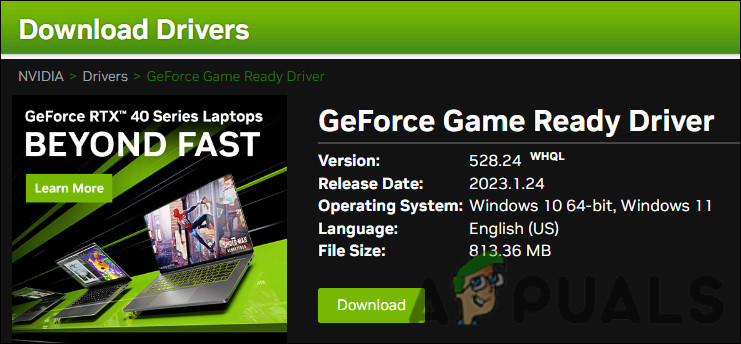
Click on the Download button for the driver - Next, run the downloaded file and choose the Perform clean install in the NVidia installation window.
- Proceed with the on-screen instructions to complete the installation and then restart your computer.
3. Remove the Conflicting Software
Another reason why the system may not be able to recognize the graphics driver can be because of conflicting software. It can occur when another program interferes with the driver, causing it to malfunction.
The easiest way to check if this is the case is by booting the computer in Safe Mode. The Safe Mode feature starts Windows without any drivers or services, which can help identify if a third-party program is causing the problem.
Follow these steps to boot the PC in Safe Mode:
- Restart the computer and as the computer is restarting, press the F8 key repeatedly.
- Choose Safe Mode from the list of options available. Alternatively, you can use the System Configuration tool to boot into Safe Mode as well.
- Check whether the operating system recognizes the graphics driver after starting the computer in Safe Mode.
During Safe Mode, if the graphics driver is recognized and the problem is resolved, it’s likely that conflicting software is the cause of the problem. If this happens, you can try to identify the conflicting software and remove it from the system.
You can either use the system restore utility to revert to an older functioning state or you can manually uninstall the recently installed software.
Here is how you can do the latter:
- Type control in the text field of Run and click Enter.
- Click on Uninstall a program under the Programs section.
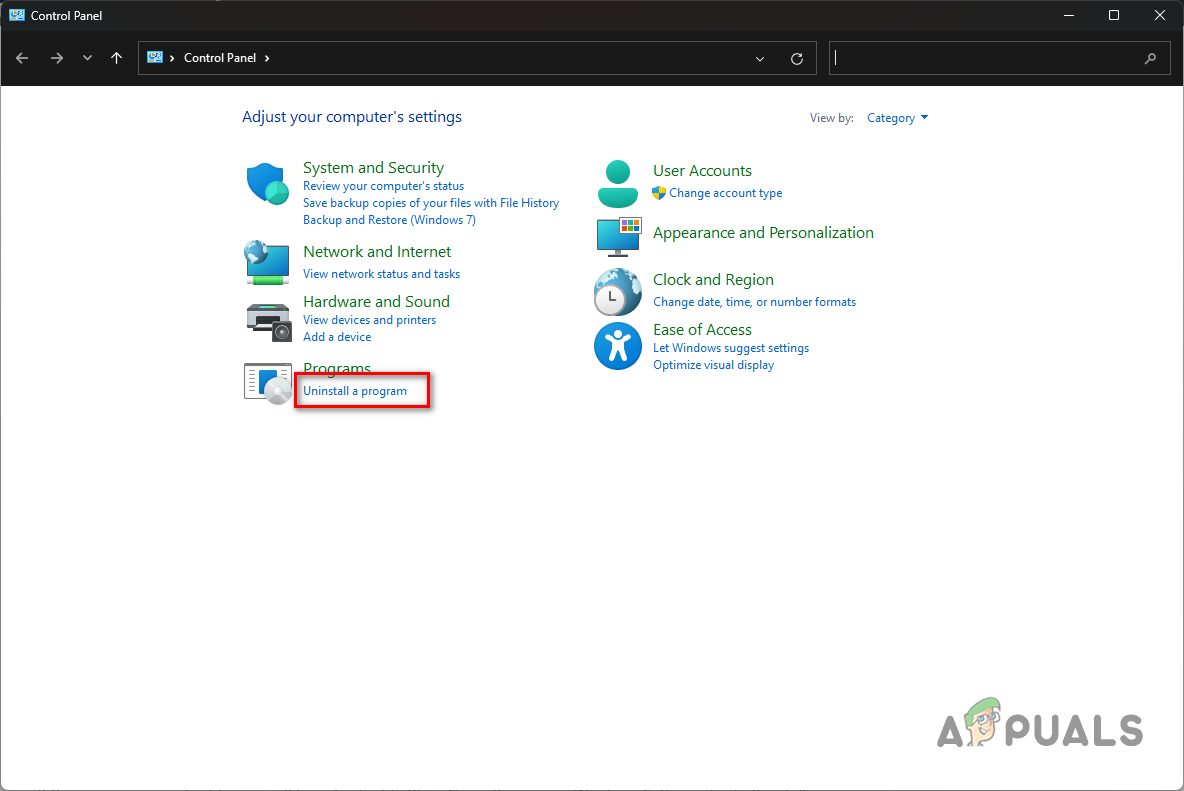
Choose Uninstall a Program - Now you should see a list of all the programs installed on your computer. Identify the problematic one and right-click on it.
- Choose Uninstall and follow the on-screen instructions to proceed with the uninstallation.
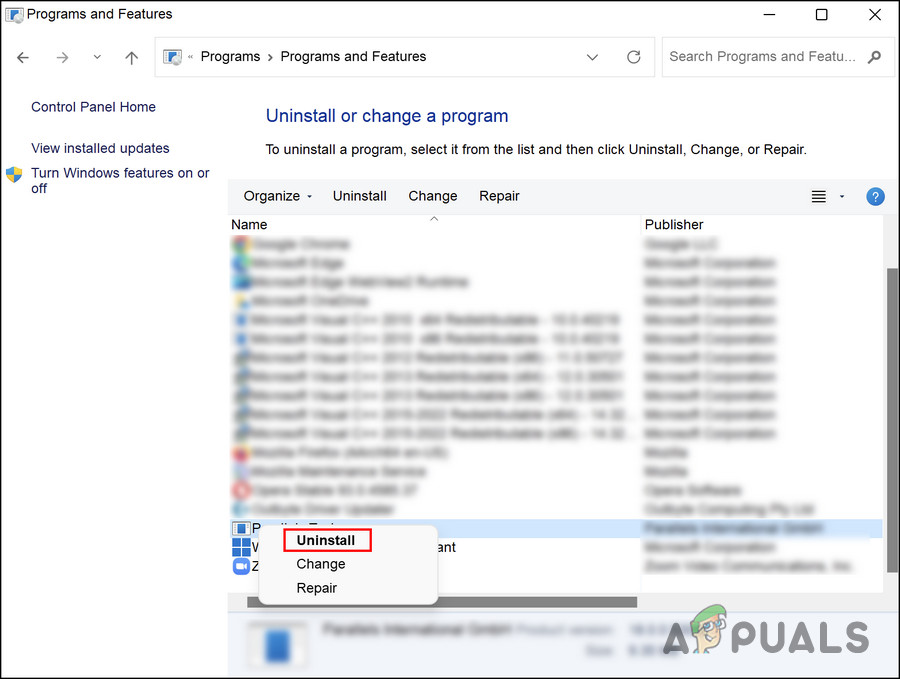
Uninstall the conflicting program
4. Update Windows
Installing the most recent Windows updates can also help resolve the issue of the graphics driver not being recognized by the computer. Software and device drivers can be updated as part of Windows updates, so if you haven’t installed the latest updates in a while, now might be a good time to do so.
Here is how you can do that:
- Press the Win + I keys together to open Windows Settings.
- Choose Windows Updates from the left pane.
- Move to the right side of the window and click on the Check for updates button.

Click on the Check for updates button - The system will now scan for the available updates. Once the scan is complete, click on the Download & install button for each update one by one.
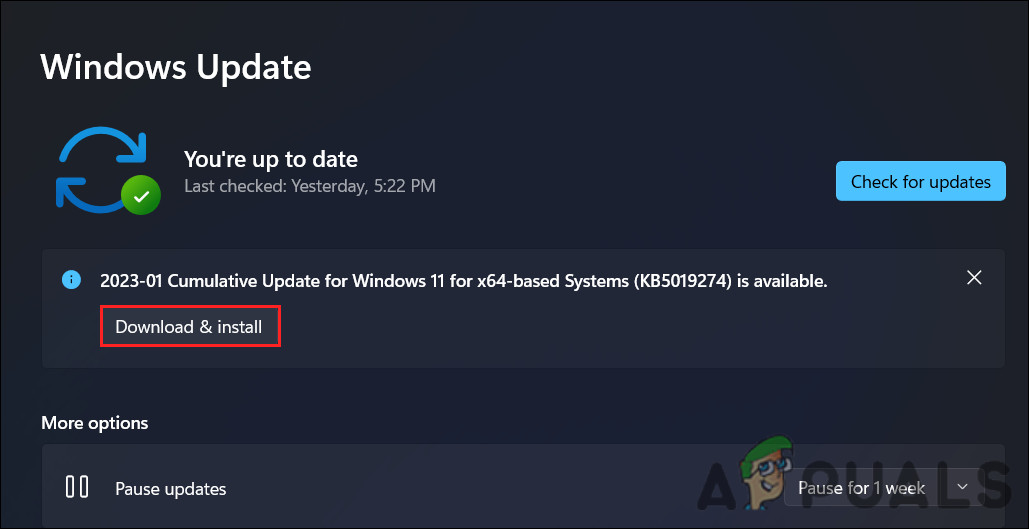
Download and install the updates - Finally, restart your computer and check if the issue is resolved.
5. Check the Connection Of Your Graphics Card to Motherboard
It is also important to ensure that the graphics card is securely plugged into the motherboard. Having a graphics card that isn’t properly connected to the motherboard can cause issues with the graphics driver. It is possible that the driver will not properly communicate with the card if the card is not connected properly, leading to the issue at hand.
Here are the general steps to check the connection of the graphics card to the motherboard and ensure it’s securely plugged in:
- Turn off the computer and unplug it from the power outlet.
- Remove the screws or thumbscrews from the side or back of the computer case to open the case.
- You will usually find the graphics card on the back of your motherboard; it plugs into the motherboard through a number of connectors.
- Ensure the connectors on the motherboard are properly connected to the graphics card and that they are seated securely in the appropriate slots.
- Push the connectors in until they click into place if they are not securely connected.
- Ensure the graphics card’s power connectors are securely plugged in and that the connectors are not loose.
- You can now close the case and plug the computer back in.
- Restart it and check if the graphics driver is now detected successfully.
